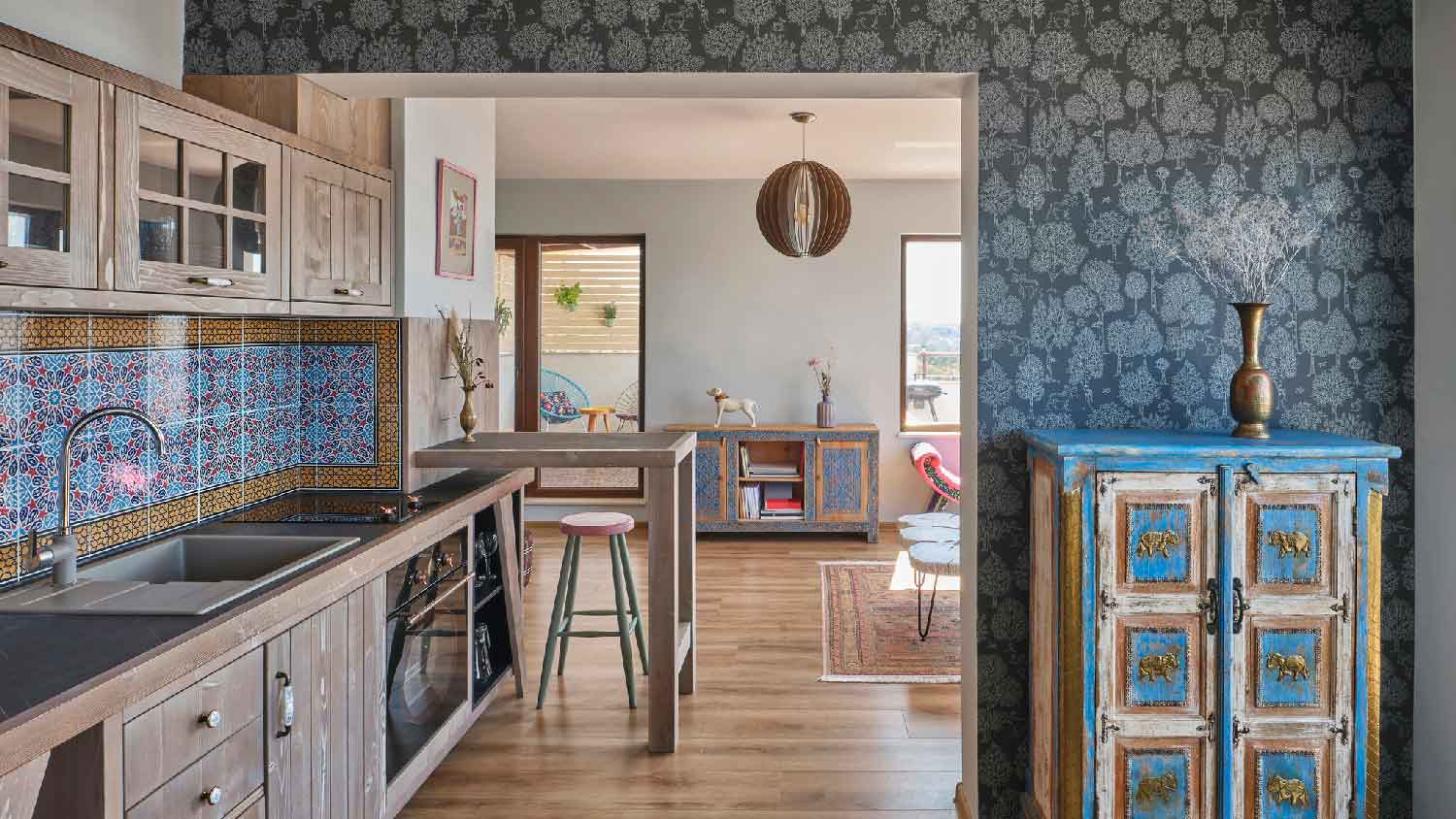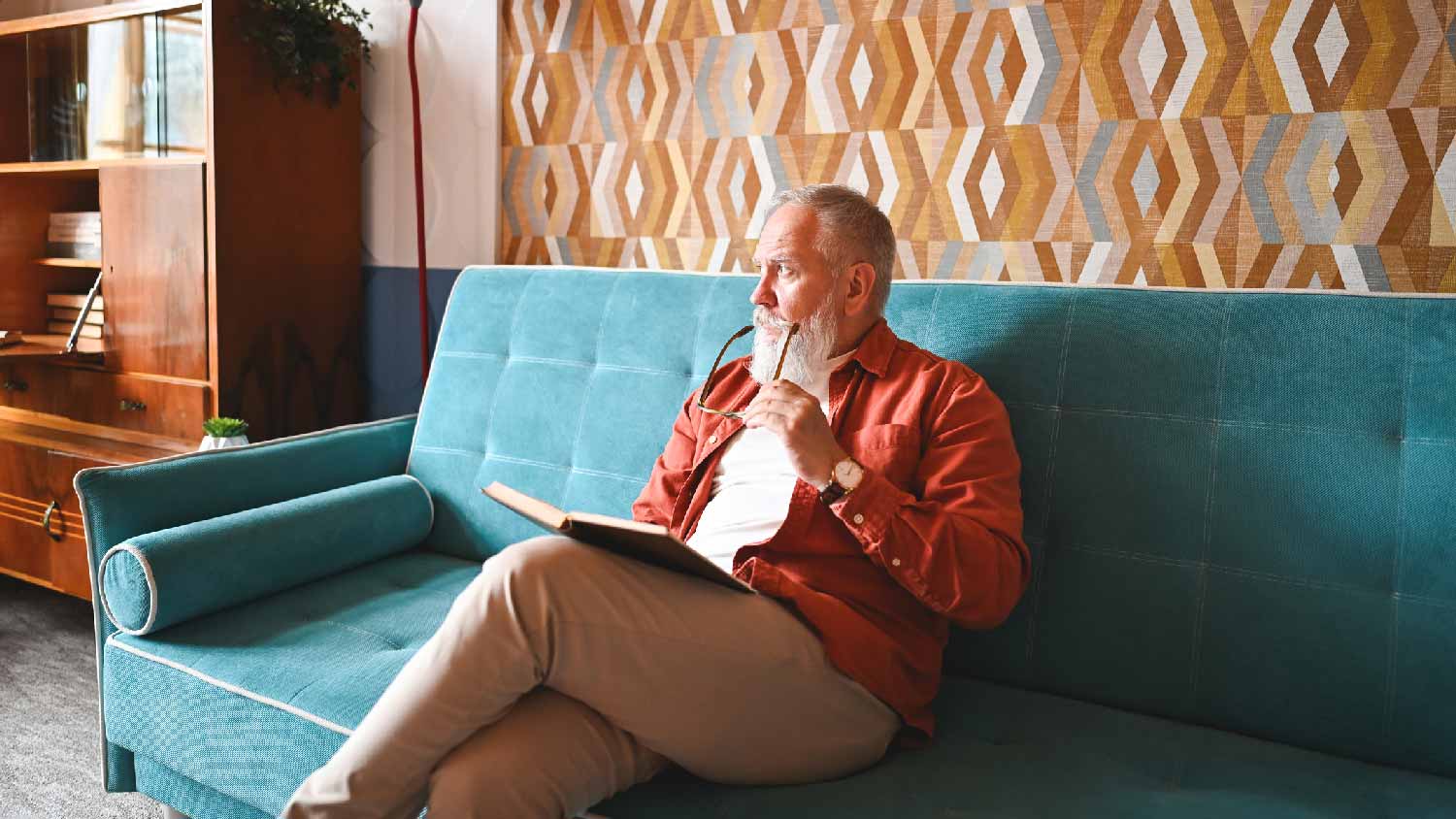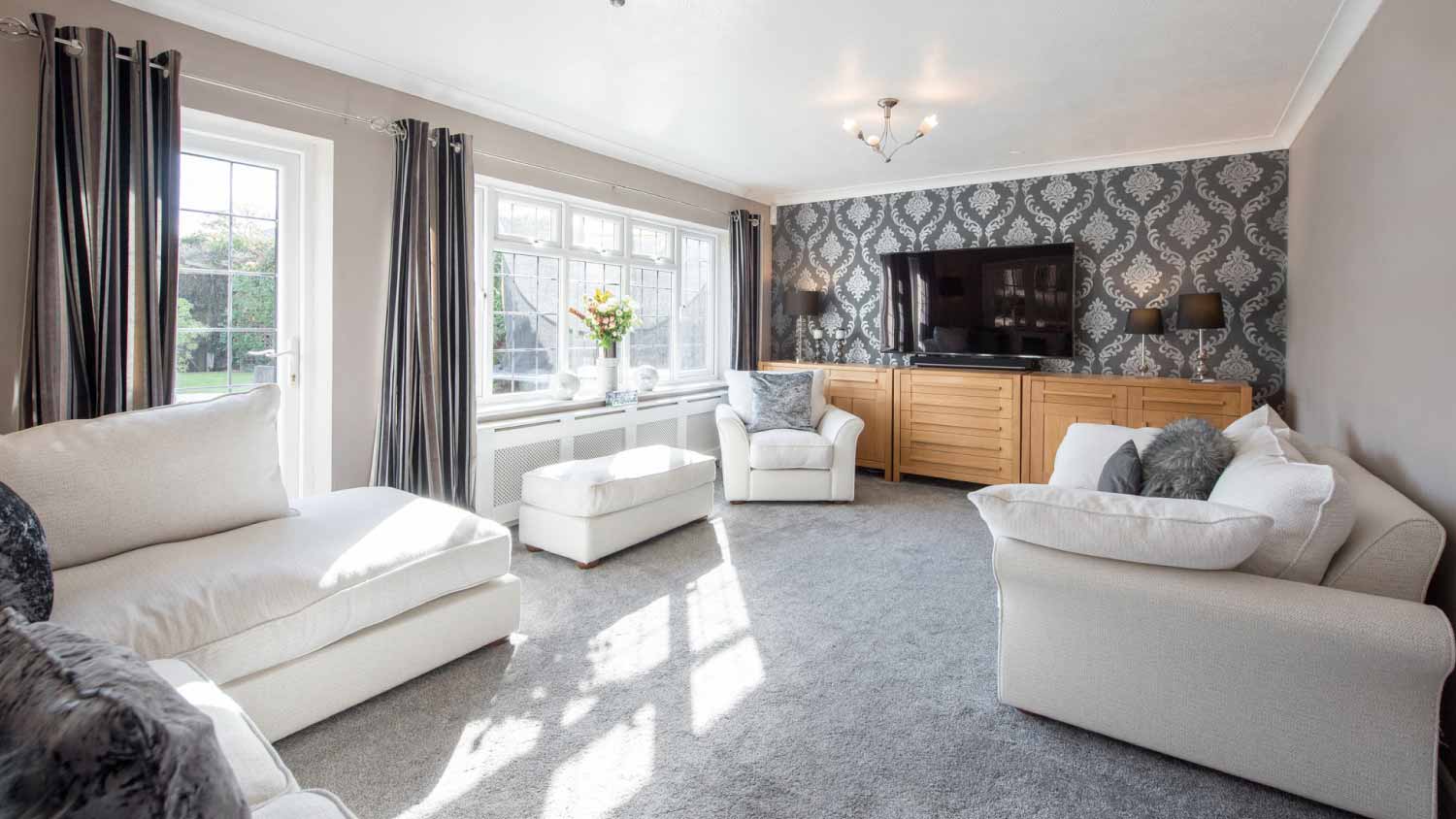What’s the Best Temperature to Hang Wallpaper?
Don’t let your hard work slide off the wall


You should hang wallpaper between 60 and 80 degrees Fahrenheit.
You should hang wallpaper at 30% and 50% relative humidity.
Temperature fluctuations can cause bubbling and flaking.
You can hang your own wallpaper, but it’s more complicated than it looks.
Hanging wallpaper is easier if the weather is cool or moderately warm. That’s because pasted wallpaper can expand and contract with temperature changes. Since wallpaper drying time can be affected by humidity, air circulation, and temperature, hanging wallpaper during the best possible conditions will give you a better result. Whether you plan to hang your own paper or hire a local pro, here’s what you need to know about the best temperature to hang the wallpaper.
What Is the Best Temperature to Hang Wallpaper?
Wallpaper should be hung in a room about 60-80 degrees Fahrenheit. This will allow it to dry quickly enough to avoid slipping or introducing mold but not so quickly as to cause shrinkage, bubbling, or curling.
Extremely cold temperatures below 40 degrees Fahrenheit can slow drying time, make wallpaper stiff and difficult to handle, and cause shrinkage.
Warmer temperatures above 90 degrees Fahrenheit can cause wallpaper to curl at the edges, expand, and develop bubbles in the adhesive.
Factors That Affect Wallpaper Application

While temperature is a significant factor that affects the result of your wallpaper application, temperature can also affect things like humidity, dampness, and condensation. Air circulation, HVAC, and sunlight exposure can also affect the temperature of your wallpaper during and immediately after installation and lead to bubbling, peeling, and mold. Here’s what you need to know about the factors that affect wallpaper dry time and ultimate results.
Humidity
The ideal humidity level to hang wallpaper is between 30% and 50% relative humidity (RH). Since the ideal humidity level for your home is between 40% and 60%, you should be okay to hang wallpaper inside, but double-checking can make all the difference. Since warmer outdoor temperatures often mean higher humidity, the exterior temperature can affect how well the wallpaper adheres, dries, and lasts over time. Humidity above 60% can allow mold to grow under your wallpaper by trapping moisture against the wall.
Ventilation
Air circulation is important for drying pasted wallpaper, but too much wind during the application process can make it difficult to deal with the paper. After the paper is applied, allowing air to circulate by opening the door, using fans on the low setting, and opening windows will help minimize moisture.
However, if it’s too hot or too cold outside, you should leave windows shut because the temperature can affect the wallpaper as it dries. Avoid using AC or heating too much in the room while your wallpaper is drying because temperature fluctuations during the curing process can cause bubbling and peeling.
Condition of the Wall
Your wall should be as clean and smooth as possible before applying wallpaper. In addition to considering the wall’s surface, the moisture level of your wall should be around 4% for ideal results. You can detect the moisture level of your wall with a moisture meter, which you can buy online or at your local home improvement store.
Since temperature fluctuations can cause condensation, increasing the moisture on your wall’s surface, you should avoid extreme temperature changes before, during, and for a few days after applying wallpaper.
Temperature of the Wallpaper
Your wallpaper needs to be acclimated to the temperature of the room you intend to hang it in. That’s to avoid shrinkage or expansion because of temperature changes that can cause bubbling or peeling.
The best way to do this is to place your wallpaper in the room you want to hang it in about 24 hours before you hang it. If possible, unroll the paper and allow it to relax to make it easier to apply. Just make sure it’s at least three feet from HVAC vents or other heat sources so it doesn’t get too warm or cold.
Type of Wallpaper
Pre-pasted wallpaper, unpasted wallpaper, and peel-and-stick wallpaper all have some things in common when it comes to hanging them. The temperature of the room they’re in should be kept at a constant temperature before, during, and for a few days after installation.
All types of wallpaper are harder to deal with when temperatures are colder, and higher heat can make them peel. While pasted wallpaper needs to cure and, therefore, is more affected by humidity and air circulation after application, self-stick wallpaper doesn’t need ventilation as the glue is already dry when applied. This means that it’s less susceptible to mold if applied to a dry wall.
The Worst Temperature to Hang Wallpaper
While it’s hard to make a call between temperatures that are too hot or too cold to hang wallpaper, the worst temperature to hang wallpaper is likely when it’s below 40 degrees Fahrenheit in the space you’re working in. At this temperature, it might be hard to get the adhesive to stick to the wall at all, let alone prevent peeling later.
Applying wallpaper when it’s too warm can cause bubbling, and applying wallpaper when it’s too cold can cause a complete lack of adhesion to the wall.
Cost to Hang Wallpaper

The cost to install wallpaper can range from $1 to $7 per square foot or between $313 and $819 per room on average. This includes labor and materials.
If you plan to hang your own wallpaper, you can spend as little as $10 for a roll of paper, or you can opt for more expensive paper that can cost up to $100 per roll.
DIY vs. Hiring a Pro
Wallpapering is DIY-able, but it takes time and effort. In addition to the time it takes to lay out the paper and dry it after application, applying the paper can take a full day in some cases. You’ll also need to prep your wall by making sure it’s smooth and dry and prime the surface to ensure the wallpaper will stick. While you can save a lot of money by doing it yourself, it will be an expenditure of time and energy.
Frequently Asked Questions
No. If you overlap seams, the wallpaper will not come out flat. In addition to possibly throwing off your pattern match between rolls, overlapping seems necessary. If wallpaper is properly acclimated, and temperature and moisture conditions are optimal during installation, there is no reason to fear shrinkage as it dries.
We don’t recommend wallpapering over older paper. That’s because creating layers of glue can invite bubbling or excess moisture on the wall’s surface. You should also prime your wall before applying wallpaper and smooth the wall as much as you can, and another layer of wallpaper complicates this process.
You can often fix an air bubble by cutting a tiny hole in the bubble with a very sharp knife, using a glue syringe to inject some adhesive behind the bubbled portion of paper, and then using a wallpaper smoothing tool to push the bubble back onto the wall's surface.





- Who Can I Hire to Install Wallpaper?
- Can You Put Wallpaper Over Wallpaper?
- Here’s the Average Life Span of Peel-and-Stick Wallpaper
- Wallpaper vs. Paint: Which Is Right for You?
- Why Is It Important to Prime Before Wallpaper Installation?
- How to Hire Someone to Remove Wallpaper
- Peel-and-Stick vs. Traditional Wallpaper: Which Is Right for Your Space?
- How to Paint Paintable Wallpaper in 6 Steps
- Everything to Know Before Painting Over Wallpaper
- 14 Bathroom Wallpaper Ideas You’ll Love










